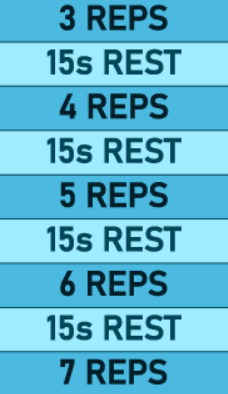Coffee does not just taste good and provide increased energy – it is an anti-aging superstar. In fact it is one of the healthiest and most beneficial foods you can drink!
Regular Coffee consumption benefits
2 – 3 cups of Coffee cuts type 2 diabetes risk by up to 60%. This benefit occurs in large part because caffeine in coffee activates the AMPK enzyme enhancing blood sugar regulation and fat burning.
Regular coffee intake reduces cardiovascular disease risk by 10 -15% including stroke and heart attack.
Caffeinated coffee reduces the risk of developing cardiac arrhythmias (abnormal heart rhythms)
Coffee activates the NRF2 enzyme which increases the production of cellular anti-oxidants including glutathione. Glutathione is often called the Master Anti-Oxidant and levels decline with age.
Coffee reduces DNA damage which is the primary trigger for cancer. Dark coffee drinkers have a 23% lower level of double-strand DNA breaks. Double strand DNA breaks are the worst type of DNA damage and directly associated with cancer initiation.
Coffee reduces liver cancer risk by 15 – 20% and endometrial cancer by about 10% and decreases the risk of liver cirrhosis.
Maximum cancer-protective benefits are observed with 4 – 5 cups daily.
Coffee and the Brain
Regular coffee intake has powerful brain benefits including:
Regular coffee drinkers consuming 3 – 4 cups per day experience a 34% – 37% drop in Parkinson’s and Alzheimer's risk.
Even moderate caffeine intake (2 cups per day) slows cognitive decline
Caffeine is key to brain benefits - caffeine blocks adenosine A2A receptors – reducing inhibitory signals in Parkinson's and reduces neuroinflammation.
Polyphenols in coffee improve blood flow and oxygen to the brain and increase Brain Derived Neurotrophic Factor (BDNF) and decrease inflammation through the activation of the NRF2 enzyme. Caffeine increases the absorption of these beneficial polyphenols.
Coffee and the Microbiome
Each cup of coffee delivers 2 grams of soluble fiber and a pharmacy of beneficial polyphenols. Coffee intake is likely the single strongest dietary factor shaping the microbiome – enriching 115 bacterial species in your gut. These polyphenols increase Short Chain Fatty Acid production which has numerous benefits. Feeding beneficial bacteria in the gut ecosystem generates metabolites that lower inflammation, lower cholesterol and provide neuroprotection to the brain.
Caffeinated vs Decaffeinated Coffee
Although there are definite benefits to drinking caffeinated coffee – decaf coffee still confers benefits. However some benefits - like the cognitive benefits - are less pronounced when caffeine is removed. Decaffeination is not a big issue from a toxin standpoint. Chemical residues in decaffeinated coffee are way lower than stringent standards set by the FDA. In addition there are solvent free decaffeination processes and products available.
In addition caffeine intake in the afternoon is not a good idea because it disrupts circadian rhythm – even if you feel you still sleep well. So if you are a fan of coffee in the afternoon it is best to switch to decaf!
Is Organic Coffee worth it?
The short answer is yes – particularly if you drink a lot of coffee. Non-organic coffee is among the most heavily chemically treated foods, with beans exposed to compounds such as glyphosate (Roundup), organophosphates, pyrethroids, and carbamates. While roasting reduces some residues, studies confirm that small amounts can remain and make their way into your cup. Over time, cumulative exposure—even at low levels—has been linked to risks including neurological disorders, hormone disruption, respiratory issues, weakened immune function, and increased cancer risk.
What about mold in coffee?
Large scale testing shows that mycotoxin levels from mold in coffee are not a concern and roasting destroys 70 – 90% of mycotoxins. In addition, brewing further reduces any remaining traces of these toxins. Coffee drinkers have lower kidney and liver disease risk suggesting minimal mycotoxin concern.
What about adding milk/dairy to coffee?
Dairy in coffee binds to beneficial polyphenols and reduces their absorption substantially so black coffee is better.
Another alternative is using plant-based milks which minimally affect polyphenol absorption.
What about Medium Chain Triglycerides?
MCT’s do not bind polyphenols and in small doses may improve the cognitive benefits by boosting ketone production.
What about the Brewing Method/Variety of Coffee/Growing Region?
Brewing method matters – filtered coffee is better – and unfiltered types of coffee reduce the benefits of coffee. Diterpenes in unfiltered coffee can increase LDL cholesterol.
Dark Roasting reduces polyphenol content including the most studied coffee polyphenol chlorogenic acids.
Cold brew has the highest anti-oxidant/polyphenol content because these compounds are not destroyed by brewing.
Instant coffee also has high levels of anti-oxidants and polyphenols for the same reason.
The Arabica variety of coffee plant tends to have less polyphenols than the Robusta variety which have higher caffeine content and higher levels of chlorogenic acids.
Coffee beans from higher elevations have fewer antioxidant – think Columbian coffee.
Coffee beans from equatorial regions (think Ethiopia and Kenya) have higher levels of antioxidants
Does L-Theanine reduce coffee anxiety?
The combination of 100mg – 200mg of L-Theanine with 200mg caffeine improves focus and mental performance while reducing anxiety and mitigating increases in blood pressure higher doses of caffeine can cause. L-Theanine is very safe, and the powder has no taste and easily dissolves in coffee!




